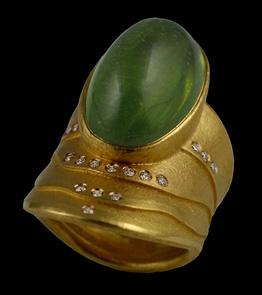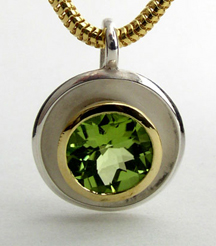
First recorded peridot was found as early as 1300 B.C. on Saint John’s, an Egyptian Island in the Red Sea.
It’s said that this green gem was impossible to spot by day but glowed in the dark, so was mined only after nightfall.
Set in gold, peridot was said to achieve its full sun-driven power against the evils of the night.
Next best option, according to Marbodus, Bishop of Rennes: Pierce the peridot, string it on the hair of an ass and tie it to your left arm. Not quite as attractive but cheaper and solid protection against the evil eye.

Finest examples of peridot in the world – in deeper greens rarely seen today – originated in ancient Egypt and ended up in the treasures of European cathedrals, after looting during the Crusades. Many were officially labeled “emeralds.”
Most peridot today comes from the San Carlos Indian Reservation in Arizona, but in fairly small stones. Fine-quality peridot in stones five carats or larger is increasingly rare, which has driven up the prices for larger stones.
Peridot, a form of olivine, is just under 7 on the Mohs scale which makes it prone to scratching if not set properly. It’s also one of the few gemstones that aren’t routinely treated; that lime-green color is all natural.
